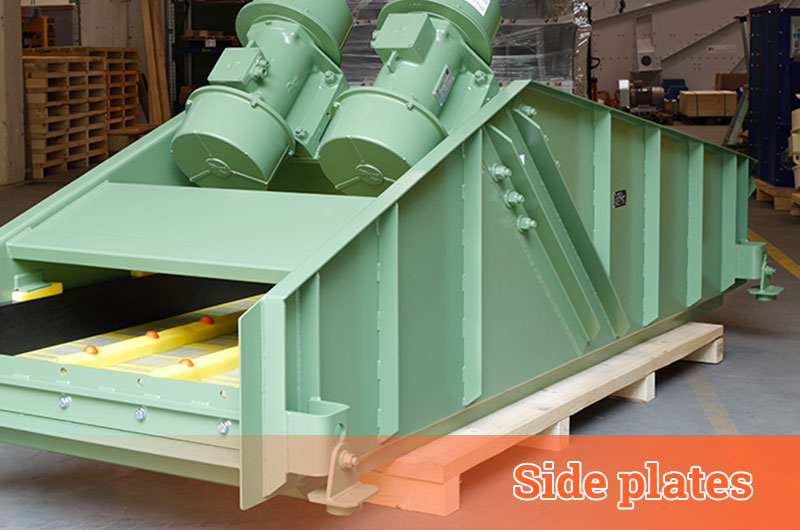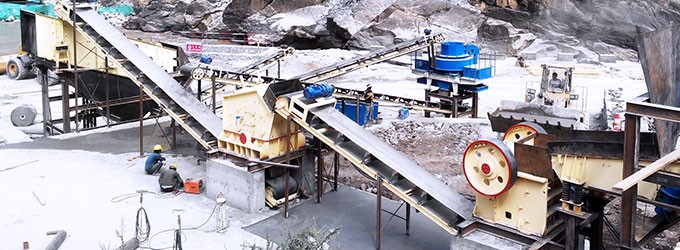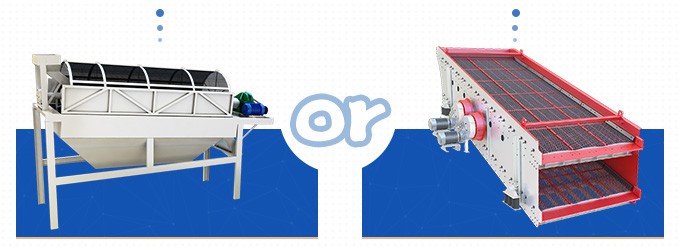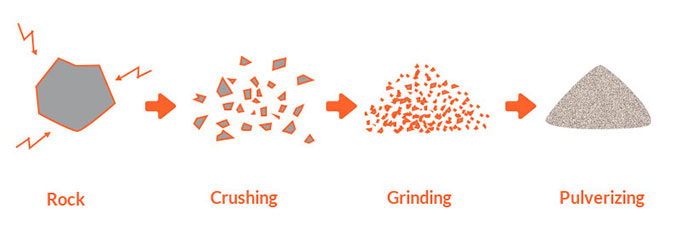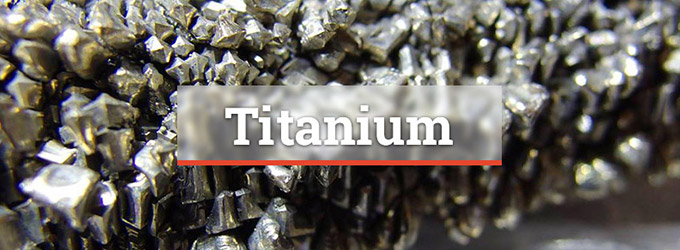The linear vibrating screen in the coal preparation plant has malfunctions such as excessive vibration of the screen box, overheating of the bearing, abnormal sound, etc., which seriously reduce the productivity of the coal processing plant. Here are some common problems that may occur on your vibration screens and ways on how to troubleshoot or fix them.
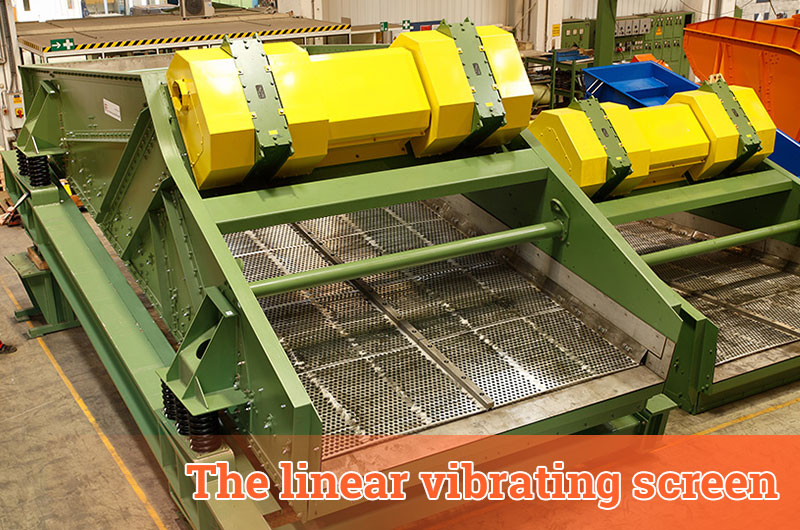
The side plates crack
The amplitude of vibrating screen box is inconsistent, resulting in concentrated stress and cracking the side plates or sidewalls. The main reasons are:
① The fact that the elevation difference between the vibrating screen springs on both sides of the vibrating screen is too large will lead to the inconsistent amplitude of the screen box.Vibrating screen troubleshooting: Install springs in strict accordance with the installation standards; replace damaged or failed springs in time.
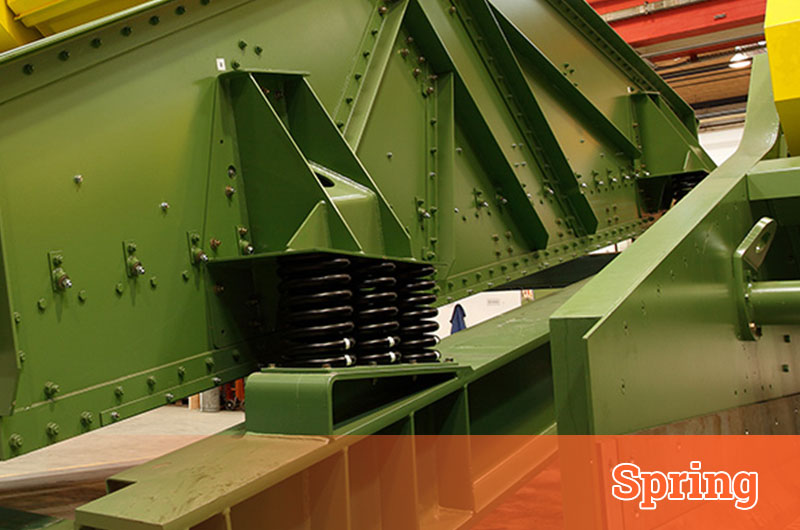
② Improper welding between side plates, reinforcing plates, and wing plates causes welding stress.
When the vibrating screen is working, the vibrating screen exciter generates a high-frequency excitation force. Under the action of the welding stress and the excitation force, the side plates of the screen box crack.
Vibrating screen troubleshooting: Adopt riveting method to connect side plates, reinforcing plates, and wing plates.
③ The included angle of the eccentric blocks is not consistent, and the specifications, model, material, and quality of the weight blocks are different.
The inconsistent angle of the eccentric blocks will cause the direction of the exciting force to be inconsistent, causing abnormal vibration of the vibrating sieve, and leading to the cracking of the side plate.
Usually, weight blocks are added to change the vibrator’s mass and amplitude according to the demand. If the weight blocks are not added properly, it will also cause vibration abnormity.
Vibrating screen troubleshooting: When disassembling, repairing, and assembling the exciter, it is necessary to ensure that the specification, model, material, and quality of the eccentric blocks are the same. During installation, the included angle of the eccentric blocks must be the same.Counterweights of the same specification, model, material, and quality shall be symmetrically installed on both sides of the screen.
Heating Problems in Bearing
Under normal circumstances, the vibrating screen bearing temperature shall be at 35 ~ 6O ℃ after the vibrating sieve has a 4-hour test without load. If the bearing temperature is too high, it may be caused by the following reasons.
① Wrong vibrating screen bearing mode
The bearing at the vibration exciter part is overheated, and there is no improvement after adding lubricating oil, so the bearing model is likely unreasonable. If the radial clearance of the bearing is too small, it will cause overheating and wear.
Vibrating screen troubleshooting: It is recommended to use bearings with large radial clearance. If it is a bearing with ordinary clearance, the outer ring of the bearing can be ground to extend the clearance.
② Too little or too much lubricating oil or the quality of lubricating oil that does not meet the requirements will also cause overheated bearing.
If the bearing is lubricated improperly, dry friction will occur. The heat generated by dry friction in a short period is enough to melt the metal, causing damage to the bearing or even seizure.
Vibrating screen troubleshooting: Regularly open the bearing end cover for inspection; timely fill in the lubricating oil that meets the requirements; Don't fill up too much when refueling.
③ The gland is firmly against the outer ring of the bearing.
There should be a gap between the gland and the outer ring of the bearing to ensure heat dissipation and axial movement.
Vibrating screen troubleshooting: Adjust the gasket between the end cover and the bearing seat to adjust the gap.
④ Slime entering the bearing end cover can also cause the bearing to heat up.
Vibrating screen troubleshooting: Clean dirty bearings; Replace the sealing ring and check the sealing condition frequently to ensure a good sealing condition.
Poor screening effect
① Blockage of the sieve holes
If the raw coal has a high mud content and water content, the screen holes will be blocked.
Vibrating screen troubleshooting: Clean the sieve holes, and then appropriately adjust the amount of spray water and the inclination of the vibrating screen deck.
② Severely worn sieve mesh
The screen mesh will be worn after long-term use, reducing the screening effect.
Vibrating screen troubleshooting: Repair the worn screen mesh when the degree of wear is light, and replace the screen mesh when the degree of wear is heavy.
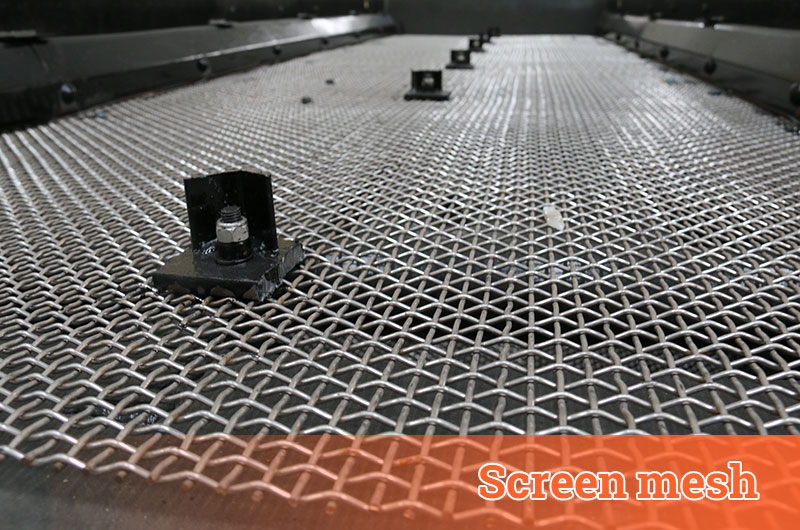
③ Uneven feeding
If the feeding chute is too narrow, the coal will not be evenly distributed along the entire screen surface, lowering the screening effect.
Vibrating screen troubleshooting: Adjust the width of the feeding chute.
Abnormal vibration of vibrating screen
Polarization, torsional vibration, small amplitude, and excessive amplitude are abnormal vibrations that often occur.
The reasons for the polarization of the vibrating separator are as follows:
- The four support points of the spring are not on the same horizontal plane;
- The angle of the counterweight of the vibrating screen has changed;
- There is a problem with the spring support, which causes the spring force to be different;
- The sieve plate is loose.
Vibrating screen troubleshooting:
- Adjust the spring support in the same horizontal plane;
- Check whether the compression of the spring is consistent;
- Check whether the spring stiffness is appropriate;
- Adjust the angle of the counterweight to be consistent;
- Check whether the sieve plate is well fixed.
The reasons for the torsional vibration of the vibrating separator are as follows:
- The direction of the exciting force of the exciter is shifted;
- The vibrating screen is not placed on the same level, the screen surface is inclined.
Vibrating screen troubleshooting: Check whether the phase angles of the eccentric blocks of the vibrating screen on both sides of the same shaft are the same.
The reasons for the small amplitude of the vibrating screen are as follows:
- Low power supply voltage;
- Too few eccentric masses;
- The included angle of the eccentric block is too small;
- Excessive feed volume.
Vibrating screen troubleshooting:
- Replace with a high-power motor;
- Increase the number of eccentric blocks;
- Adjust the feeding amount.
The reasons for the excessive vibration of the vibrating screen are as follows:
- Exciting force is too strong;
- The hardness of the damping spring is too large;
- Loosen anchor bolts;
- The rotation and power of the motors are different.
Vibrating screen troubleshooting:
- Adjust the exciting force by changing the eccentricity;
- Replace the spring with appropriate stiffness;
- Tighten the anchor bolts.
Vibrating screen noise issues
Worn bearings, under-tightened screens, loose bolts, loose and damaged springs can cause noise.
Vibrating screen troubleshooting:
- Replace damaged bearings in time;
- Tighten the slack screen, and re-tighten the replaced screen every 4-8 hours until it is fully tensioned;
- Check bolts regularly;
- Replace the damaged spring and the spring at the symmetrical position in time. The specifications of the newly replaced springs must be the same.
Abnormal coal flow
Sometimes coal is unevenly distributed on the screen surface.
Vibrating screen troubleshooting: If there is no coal in the front section of the screen, adjust the eccentric blocks forward appropriately. If there is no coal in the middle section, the mass of the eccentric block is too light and the amplitude cannot meet the requirements. Therefore, the mass of the eccentric block should be increased. If there is no coal in the rear section, adjust the eccentric wheel backward.
In addition, improper placement of flushing pipes on the screen surface will result in no coal on the screen surface.
It can be solved by adjusting the position of the flushing pipes and speeding up the running speed of the material on the screen. But this method is only suitable for screening or dewatering 0-3mm materials.
The above is the solution provided by Fote engineers for the high-frequency failure of the linear vibrating screen in the coal preparation plant. It should be noted that the vibration machine may have multiple failures at the same time. Therefore, when repairing, find the nub of the problem, make correct judgments, carefully disassemble and assemble, and adjust carefully.

